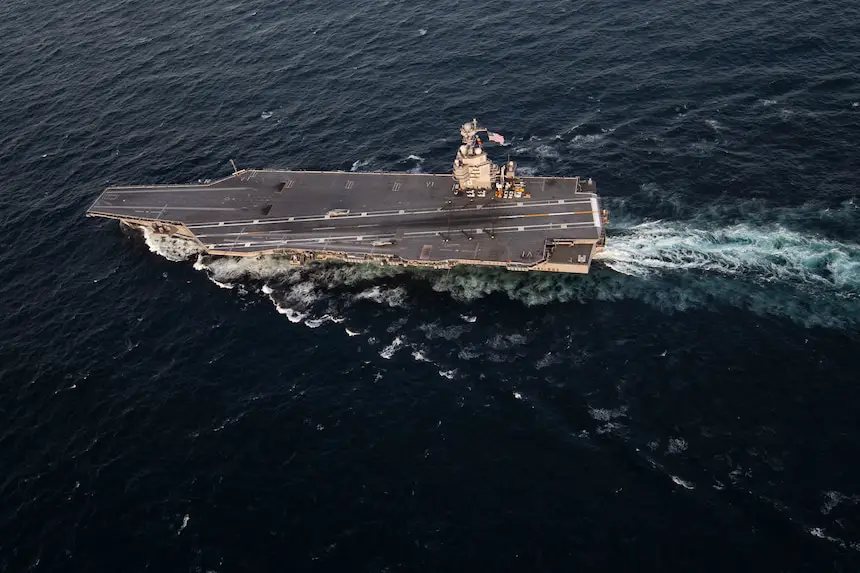Sailors aboard the aircraft carrier USS Gerald R. Ford (CVN 78) successfully completed the Combat Systems Operational Readiness Exercise (CSORE) while underway July 5 to July 14, marking a crucial turning point in the ship’s deployment readiness. CSORE is an exercise meant to check the functionality of combat systems and test the crew’s ability to handle threats to the ship. Fire Controlman 2nd Class Tyler Westbrook, from Detroit, the lead petty officer for the combat systems CS-7 division, reported that the crew used the Close-In Weapons System (CIWS) and MK-38 25 millimeter guns to engage simulated drone combatants on the surface and in the air. Before the event could begin, the crew worked tirelessly to ready the equipment. Numerous hours were spent performing pre-fire checks on the mounts. After the mounting and equipment checks, the crew then had to load the CIWS weapons.
“The primary job of the MK-38 guns in all this was to disable and sink the ‘hostile’ surface vessels coming toward the ship. CIWS had a similar purpose in the event. The equipment and operators were tested in their ability to locate, track, and engage inbound surface and air contacts.,” said Fire Controlman 2nd Class Tyler Westbrook.
“Being a part of CSORE with the MK-38’s and getting experience everything first-hand was amazing. My proudest moment was watching the MK-38’s operate as designed and destroy surface contacts with speed and precision of action. CSORE is one of the most rewarding events I have ever participated in,” Westbrook said, echoing Mejia’s sentiment. It shows that we are able to defend Ford and her Sailors from whatever may be sent her way.,” Gunner’s Mate 2nd Class Hector Mejia, from Los Angeles, the lead petty officer of weapons G-2 division said.

The Phalanx CIWS (pronounced “sea-wiz”) is a gun-based close-in weapon system to defend military watercraft automatically against incoming threats such as aircraft, missiles, and small boats. It was designed and manufactured by the General Dynamics Corporation, Pomona Division, later a part of Raytheon. Consisting of a radar-guided 20 mm (0.8 in) Vulcan cannon mounted on a swiveling base, the Phalanx has been used by the United States Navy and the naval forces of 15 other countries. The MK-38 is a 25-mm machine gun installed for ship self-defense to counter High Speed Maneuvering Surface Targets (HSMST). The MK 38 was first employed aboard combatant and auxiliary ships conducting Mid-East Force escort operations and during Operations Desert Shield and Desert Storm. MK 38 Mod 1s are maintained in a rotatable pool for temporary installation aboard deployed ships.
USS Gerald R. Ford (CVN-78) is the lead ship of her class of United States Navy aircraft carriers. The ship is named after the 38th President of the United States, Gerald Ford, whose World War II naval service included combat duty aboard the light aircraft carrier Monterey in the Pacific Theater. Construction began on 11 August 2005, when Northrop Grumman held a ceremonial steel cut for a 15-ton plate that forms part of a side shell unit of the carrier. She was christened on 9 November 2013. Gerald R. Ford entered the fleet replacing the decommissioned USS Enterprise (CVN-65), which ended her 51 years of active service in December 2012. Gerald R. Ford was delivered to the Navy on 31 May 2017 and formally commissioned by President Donald Trump on 22 July 2017. As of 2017, she is the world’s largest aircraft carrier, and the largest warship ever constructed in terms of displacement.















